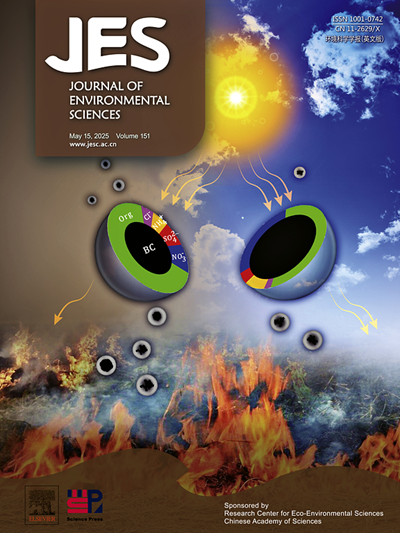Variations in the leaf economics spectrum, anatomical, ultrastructural, and stomatal traits of five tree species in the urban-rural air pollution environment
IF 5.9
2区 环境科学与生态学
Q1 ENVIRONMENTAL SCIENCES
引用次数: 0
Abstract
Rapid urbanization has contributed to global increases in air pollution derived from urban areas. Unlike natural forests, urban forests are exposed to higher concentrations of airborne pollutants due to the strong urban-suburban-rural pollutant emission gradients. However, there remains a pressing lack of available information pertaining to the urban air pollution-related effects on the leaf economics spectrum, anatomical, ultrastructural, and stomatal traits of tree species along an urban-rural gradient. Here, the degree to which urban air pollution impacts the adaption of greening tree species and associated service functions was assessed by sampling five common tree species (Acer pictum, Fraxinus chinensis, Koelreuteria paniculata, Salix babylonica, Sophora japonica) along urban-rural-natural forests in the Beijing metropolitan region of China. These analyses revealed a significant reduction in leaf mass per unit area (–13.4 %), leaf thickness (–16.7 %), and stomatal area (–27.5 %) with increasing proximity to areas of greater air pollution that coincide with significant increases in leaf tissue density (+12.6 %), leaf nitrogen content (+10.1 %), relative chlorophyll content (+2.7 %), and stomatal density (+11.9 %). Higher air pollution levels were associated with organelle changes including gradual disintegration of chloroplasts, larger intercellular spaces and apparent starch and plastoglobuli deposition. Air pollution was conducive to the strengthening of the trade-off potential and adaptation strategies of trees in urban ecosystems, which are associated with trees with a rapid investment return strategy associated with thick leaves and strong photosynthetic capacity. These results provide strong empirical evidence of the profound air pollution-induced changes in leaf functional traits and adaption ability of urban forest tree species.
求助全文
约1分钟内获得全文
求助全文
来源期刊

Journal of Environmental Sciences-china
环境科学-环境科学
CiteScore
13.70
自引率
0.00%
发文量
6354
审稿时长
2.6 months
期刊介绍:
The Journal of Environmental Sciences is an international journal started in 1989. The journal is devoted to publish original, peer-reviewed research papers on main aspects of environmental sciences, such as environmental chemistry, environmental biology, ecology, geosciences and environmental physics. Appropriate subjects include basic and applied research on atmospheric, terrestrial and aquatic environments, pollution control and abatement technology, conservation of natural resources, environmental health and toxicology. Announcements of international environmental science meetings and other recent information are also included.
 求助内容:
求助内容: 应助结果提醒方式:
应助结果提醒方式:


